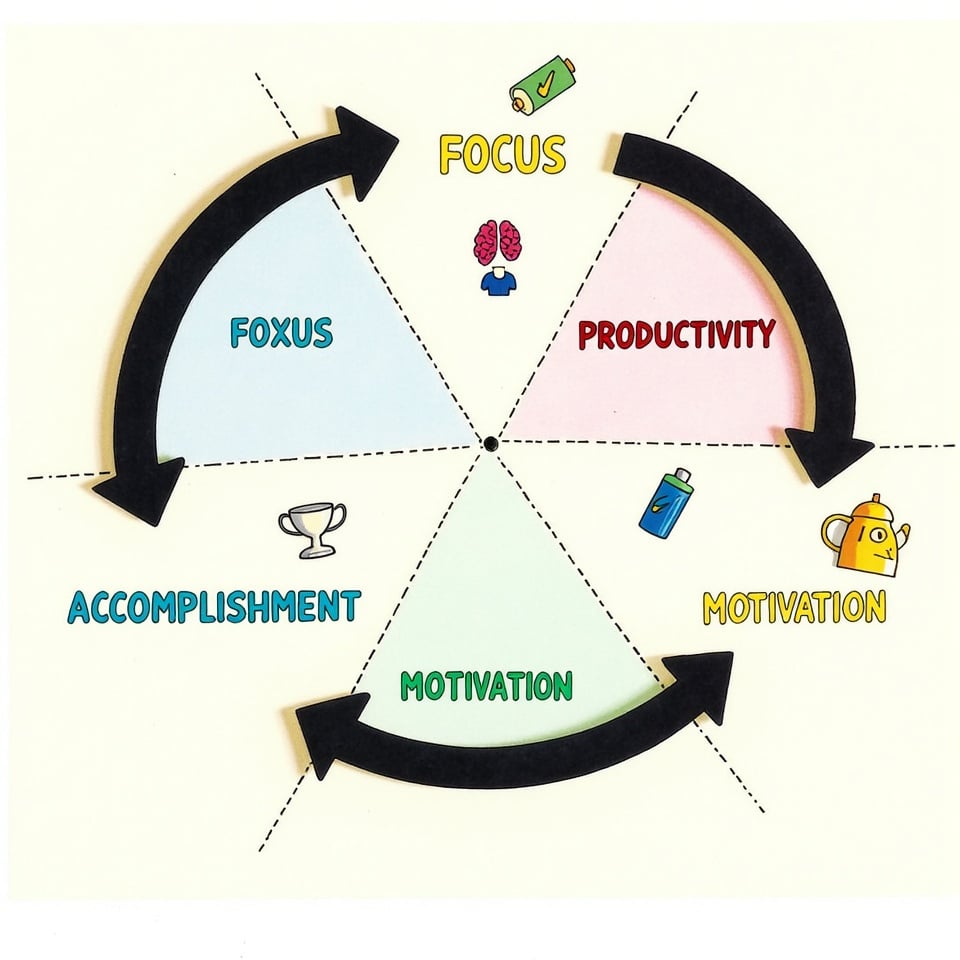Macromanagement is a leadership style that focuses on outcomes, not checklists.
Instead of breathing down your team’s neck, you trust them to deliver.
And in today’s fast-paced, remote-first world, that’s exactly what high-performing teams need.
In this guide, you’ll learn what macromanagement really means, how it compares to micromanagement, and why it’s a game-changer for team autonomy and innovation.
Plus, I’ll show you how to lead with a macromanagement mindset — even if you’re used to being hands-on.
Let’s dive in.
What is macromanagement?
Macromanagement is like being the captain of a ship.
You’re not down in the engine room checking each bolt — you’re on the bridge, steering the whole thing.
So, what does a macro manager actually do?
Let’s break it down.
- Big Picture Thinking: A macro manager focuses on goals, results, and long-term plans. Instead of watching over every task, they guide the overall direction.
- Trust Over Control: They believe in their team. They give space, not step-by-step instructions. It’s about “You’ve got this” instead of “Do it exactly this way.”
- Less Checking, More Coaching: They don’t hover. Instead, they check in at key points, give feedback, and adjust the sails if needed.
Imagine you’re working on a project.
A macro manager won’t ask you what you did every hour.
Instead, they’ll ask: “How’s progress? Need anything from me?”
It’s not about ignoring the details — it’s about letting skilled people handle them.
Why does this matter? Because when done right, macromanagement builds trust, boosts morale, and makes teams feel empowered.
It says, “I trust your process as long as we reach the destination.”
Think of it as setting the GPS, then letting the driver drive.
Macromanagement vs. micromanagement
Let’s get real — we’ve all had that one boss who wanted updates every five minutes.
Exhausting, right?
That’s micromanagement.
Now flip the script.
Think of a manager who sets the goal, hands you the tools, and says, “I know you’ll handle it.”
That’s macromanagement.
Here’s how the two stack up:
Focus
- Micromanagers focus on how things are done. Every step. Every detail.
- Macromanagers focus on what gets done and why it matters.
Trust Level
- Micromanagers: Low trust. They need to see it to believe it.
- Macromanagers: High trust. They assume competence until proven otherwise.
Communication Style
- Micromanagers: “Send me updates every hour.”
- Macromanagers: “Let’s check in once a week.”
Time Management
- Micromanagers: Spend time controlling.
- Macromanagers: Spend time planning and strategizing.
Impact on Teams
- Micromanagement: Leads to stress, burnout, and resentment.
- Macromanagement: Builds ownership, creativity, and team confidence.
Let’s put it simply:
Micromanagement is like watching someone cook and telling them how to chop onions.
Macromanagement is handing them the recipe and saying, “Let me know when it’s ready.”
Which one would you rather work with?
Yeah, us too.
Benefits and challenges of macromanagement
Let’s be honest—macromanagement sounds great.
Less hovering, more freedom.
But like every leadership style, it’s not one-size-fits-all.
Let’s break down what works, what doesn’t, and how it fits into the bigger picture.
Benefits of Macromanagement
1. Autonomy that builds trust: When you give people space to work, they feel respected. They take ownership. They care more.
2. Boosts creativity and innovation: No one’s micromanaging your process, so you’re free to experiment, try new ideas, and solve problems your way.
3. Speeds up decision-making: Less “let me check with the boss.” More “I’ve got this covered.”
4. Great for experienced teams: Got pros on your team? Let them shine. Macromanagement respects expertise without getting in the way.
Challenges of Macromanagement
1. Risk of misalignment: Too much distance, and your team might head in 10 different directions. Regular check-ins = key.
2. Some people need more guidance: Not everyone thrives under freedom. New hires or juniors might feel lost without detailed instructions.
3. Problems can go unnoticed: If you’re too hands-off, issues might snowball before you even see them. Stay available and observant.
Macromanagement vs. Other Leadership Styles
So, where does macromanagement fit in the leadership toolbox?
Let’s compare:
- Democratic: Involves the team in decisions. Like macromanagement, it values input—but it’s more about consensus.
- Laissez-faire: Total hands-off. Macromanagement still guides outcomes—laissez-faire? It’s “figure it out on your own.”
- Transformational: Focuses on big vision, motivation, and personal growth. Macromanagement often overlaps here—both inspire, not dictate.
Macromanagement blends best with democratic and transformational styles.
It creates space while still supporting growth and alignment.
Managing Remote or Hybrid Teams the Macro Way
Macromanagement is made for remote work.
Why?
- You can’t watch everyone’s screen.
- You shouldn’t schedule a meeting for every little update.
- You need to trust your team to get things done, wherever they are.
Here’s how to do it right:
1. Set crystal-clear goals: Everyone should know what success looks like. No guessing games.
2. Use async tools wisely: Slack, Trello, Notion, email—pick what works, and don’t overdo it. Avoid notification overload.
3. Check in with purpose: Weekly check-ins? Great. Daily standups? Maybe not. Respect time zones and deep work hours.
4. Be present without micromanaging: Let your team know you’re there to support, not to snoop.
In short: Macromanagement can be a superpower—if used with clarity, trust, and the right tools.
Too loose, and it breaks.
Too rigid, and it’s not macro anymore.
Find the sweet spot.
So, you want to lead without hovering? That’s the heart of macromanagement.
But it’s not just “hands-off and hope for the best.” It’s about smart structure, clear direction, and a whole lot of trust.
Let’s walk through exactly how to lead like a macro manager — without losing your grip on results.
1. Set a Clear Vision and Direction
Think big picture.
Start with the “why.”
Why does this project matter? What’s the long-term goal?
Your team should know what they’re working toward — not just what they’re doing today.
Pro tip: Share stories, not just bullet points. A compelling vision sticks better than dry instructions.
2. Build Strong Systems for Accountability
Freedom only works with structure.
Use tools like Trello, Notion, or Asana to keep tasks visible (Check out our guide on Asana vs. Trello).
Assign deadlines. Add check-in points. Make it easy to track progress — without chasing people.
Think of it like setting up a self-cleaning oven. Once the system’s built, it runs itself.
3. Define Roles and Success Metrics Clearly
“Who’s doing what?”
“Where does my work fit in?”
If people don’t know the answers, they’ll flounder.
Spell it out early.
Give each team member a clear role, with measurable goals. Not vague expectations.
Success should be easy to recognize — for you and them.
4. Practice Active Listening and Open Communication
Macromanagement doesn’t mean disappearing.
Check in with curiosity, not control.
Ask open questions like:
- “What’s feeling stuck?”
- “Where can I support you better?”
Listen more than you talk. And when you do talk, skip the lectures — go for clarity and encouragement.
5. Give Your Team Room to Experiment and Flow
Innovation needs breathing room.
Encourage trial and error.
Let people explore different approaches without fear of being nitpicked.
Cut down on interruptions. Trust deep work.
And seriously — don’t send Slack pings every 20 minutes.
6. Be Present, Not Prescriptive
Your job isn’t to tell people how to do their jobs.
It’s to remove roadblocks, provide vision, and support growth.
Stay available.
Be responsive.
But let them lead the “how.”
Think of yourself as a coach, not a controller.
7. Monitor Progress from a Bird’s-Eye View
Zoom out.
Dashboards, weekly reports, quick updates — these are your tools.
You don’t need every detail, just the patterns.
Look for trends, not tasks. Are deadlines being hit? Is quality consistent? Is momentum steady?
8. Recognize Signs of Stress or Disengagement
Just because you’re not in the weeds doesn’t mean you’re out of touch.
Watch for signs like missed check-ins, short replies, or a dip in energy.
Check in human-to-human: “How are you doing — really?”
Sometimes the best leadership is just noticing someone’s off and saying, “I’ve got your back.”
Macromanagement isn’t about doing less.
It’s about leading smarter — with trust, clarity, and a whole lot of empathy.
Embracing the big-picture approach
Macromanagement is all about zooming out. It’s seeing the forest, not obsessing over each tree.
And honestly? That shift can change everything — for you and your team.
When you lead with the big picture in mind, you stop chasing every little detail.
Instead, you focus on impact.
Direction.
Momentum.
Here’s what that looks like in practice:
- You talk about goals, not just tasks. “Let’s grow revenue by 20% this quarter,” not “Update the spreadsheet by 3 PM.”
- You measure progress over perfection. Did we move forward? Did we learn something? Good. Keep going.
- You guide the why, not the how. Your team figures out the best path — you just make sure the destination is clear.
This approach builds confidence, not just in your team — but in yourself as a leader.
Because here’s the truth:
Trying to control everything is a trap.
But when you trust people, set clear goals, and stay focused on the bigger vision?
That’s when the real magic happens.
So take a step back.
Lift your eyes.
Lead like a strategist, not a supervisor.
That’s the power of the big-picture mindset.







